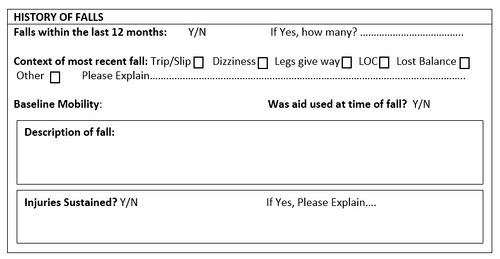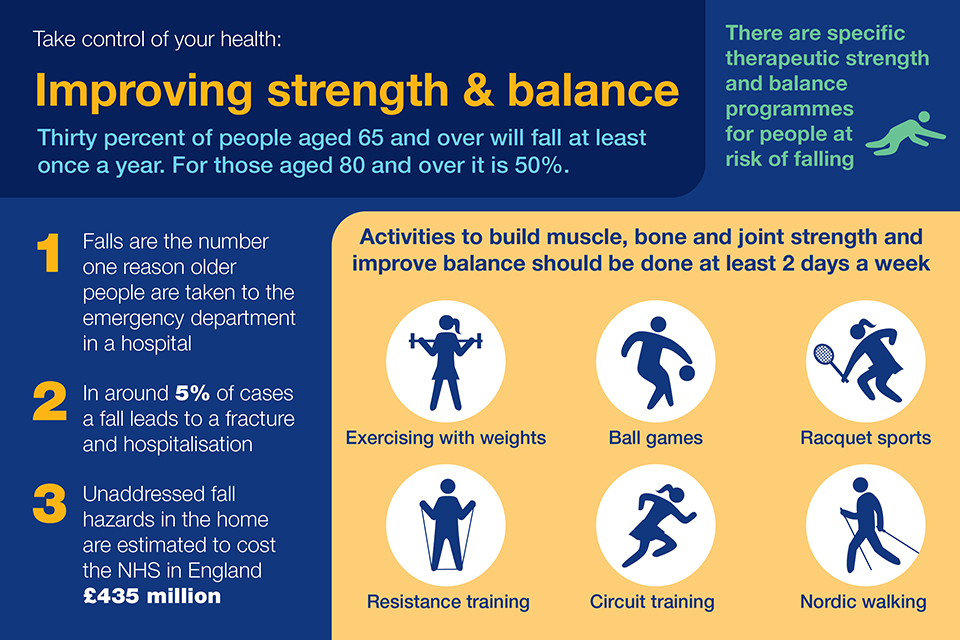Dementia Fall Risk for Beginners
Dementia Fall Risk for Beginners
Blog Article
Indicators on Dementia Fall Risk You Need To Know
Table of ContentsDementia Fall Risk Fundamentals ExplainedDementia Fall Risk - The FactsDementia Fall Risk for BeginnersSome Known Factual Statements About Dementia Fall Risk
An autumn threat evaluation checks to see just how most likely it is that you will drop. It is mainly done for older grownups. The analysis typically consists of: This consists of a series of questions about your general health and if you've had previous drops or problems with balance, standing, and/or walking. These devices evaluate your stamina, equilibrium, and stride (the means you walk).Interventions are recommendations that might reduce your risk of falling. STEADI includes 3 steps: you for your threat of falling for your threat aspects that can be enhanced to attempt to protect against drops (for example, equilibrium troubles, damaged vision) to minimize your threat of dropping by using efficient techniques (for instance, giving education and resources), you may be asked numerous concerns consisting of: Have you dropped in the previous year? Are you stressed concerning dropping?
If it takes you 12 seconds or even more, it might suggest you are at higher danger for a fall. This examination checks strength and equilibrium.
The positions will get more difficult as you go. Stand with your feet side-by-side. Move one foot midway onward, so the instep is touching the big toe of your various other foot. Relocate one foot totally before the other, so the toes are touching the heel of your various other foot.
Dementia Fall Risk - Truths
A lot of drops occur as an outcome of multiple adding factors; for that reason, handling the risk of falling begins with recognizing the variables that add to drop threat - Dementia Fall Risk. A few of one of the most appropriate danger factors consist of: History of prior fallsChronic medical conditionsAcute illnessImpaired gait and equilibrium, lower extremity weaknessCognitive impairmentChanges in visionCertain high-risk medicines and polypharmacyEnvironmental variables can likewise increase the risk for drops, consisting of: Insufficient lightingUneven or damaged flooringWet or slippery floorsMissing or damaged hand rails and get barsDamaged or incorrectly equipped equipment, such as beds, wheelchairs, or walkersImproper usage of assistive devicesInadequate guidance of the individuals living in the NF, including those that display aggressive behaviorsA effective fall danger monitoring program requires a complete scientific analysis, with input from all participants of the interdisciplinary team

The care strategy must also include treatments that are system-based, such as those that advertise a secure environment (proper lighting, hand rails, grab bars, and so on). The efficiency of the treatments must be reviewed regularly, and the care strategy modified as needed to reflect adjustments in the autumn threat assessment. Applying a loss threat administration system making use of evidence-based finest technique can minimize the prevalence of falls in the NF, while limiting the potential for fall-related injuries.
3 Easy Facts About Dementia Fall Risk Explained
The AGS/BGS standard recommends evaluating all grownups aged 65 years and older for loss danger each year. This screening contains asking individuals whether they have dropped 2 or more times in the past year or sought medical focus for a loss, or, if they have not dropped, whether they really feel unstable when strolling.
Individuals that have fallen once without injury ought to have their balance and gait examined; those with gait or equilibrium problems ought to receive added assessment. A history of 1 fall without injury and without gait or balance issues does not necessitate additional evaluation beyond ongoing yearly fall risk testing. Dementia Fall Risk. An autumn risk assessment is called for as part of the Welcome to Medicare examination

What Does Dementia Fall Risk Do?
Recording a drops background is one of the quality indicators for fall prevention and management. Psychoactive medications in particular are independent predictors of falls.
Postural hypotension can commonly be reduced by reducing the dose of blood pressurelowering medicines and/or stopping medicines that have orthostatic hypotension as a side impact. Use above-the-knee assistance tube and resting with the head of the bed boosted may visit here additionally reduce postural decreases in blood stress. The advisable components of a fall-focused checkup are shown in Box 1.

A TUG Get More Information time above or equal to 12 seconds suggests high autumn risk. The 30-Second Chair Stand examination analyzes reduced extremity toughness and equilibrium. Being not able to stand from a chair of knee elevation without utilizing one's arms indicates increased autumn threat. The 4-Stage Balance examination examines fixed equilibrium by having the client stand in 4 settings, each considerably more tough.
Report this page